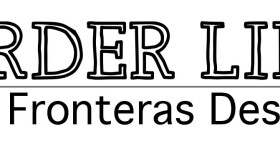Immigration reform is back on the national political menu. It was a huge issue during George W. Bush's second term, when pleas for reform of the immigration system drew tens of thousands of protestors into the streets back in 2006 and 2007. Now, with President Barack Obama’s re-election and the undeniable clout of the “sleeping giant” -– the Latino vote -– even the GOP is trying to plant their flag on that immigration reform mountain.
A bipartisan group of Senators is already meeting to hammer out some kind of reform legislation in Washington, and the word is, via The Los Angeles Times, the Obama Administration wants to strike early with a proposal in the coming year.
But let us define some terms here, because just like “revenue enhancements” is code for “new taxes,” and “fiscal cliff” may be more accurately termed a “fiscal bluff,” the immigration debate is replete with code words and euphemisms. And it’s not a simple, black and white, Democrat/Republican issue. It’s messy, controversial, overlaid with racism at times, and an issue that literally for centuries has gone to the core of who we are as a country.
Immigration reform –- Our immigration system is broken, and needs change. Here are some of the problems:
• Too many people want to live and work in the U.S.; we make it very difficult to do so. Thus, an estimated 11 million people are here without documentation.
• Not enough visas are available to bring in high-skilled or less-skilled workers at the levels our labor market needs.
• Visa caps, set years ago, have created huge backlogs of family members who wait sometimes up to 20 years to be reunited with family in the U.S.
• High numbers of undocumented workers in this country open the way for undercutting wages that hurt all American workers.
• Despite millions spent to guard and secure our borders, people who want to come here still get across.
• Courts set up to adjudicate immigration law are hopelessly backlogged.
Comprehensive immigration reform – A plan long-advocated by many Democrats, President Obama and immigration activists. Many opponents see Comprehensive Immigration Reform (CIR) as a code for amnesty for illegal immigrants. Any CIR plan would be a compromise that promotes increased border security and increased workplace enforcement, while promoting some form of legalization of immigrants already in this country. Such a plan would likely include:
• A path to citizenship for people here already;
• Reform of the current visa system to make it easier to bring in foreign workers for high-skilled and less-skilled jobs;
• Passage of the DREAM Act, which would allow permanent residency and other benefits to children brought here as minors;
• Improved border security and workplace enforcement.
Workplace/worksite enforcement -– Immigration and Customs Enforcement policies to ensure that U.S. employers are hiring only U.S. citizens, and that workers’ rights are upheld in the worksite.
E-Verify -- A federal web‐based program through which U.S. businesses can attempt to verify the work authorization of new hires. Employers transmit identity information through E‐Verify, where it is electronically checked against both Social Security Administration (SSA) and Department of Homeland Security (DHS) databases. The system then either confirms to the employer that the worker is employment‐authorized or it issues a notice indicating the databases cannot immediately confirm that the worker is employment‐authorized. If the employer receives a notice, the worker then has eight federal working days to contest the finding with SSA or DHS.
DACA –- President Obama’s executive order, announced in June 2012, to give work permits to young people brought to this country illegally as children. DACA stands for Deferred Action for Childhood Arrivals. The program began accepting applications on Aug. 15, 2012.
Deferred Action -- Postponement of deportation proceedings.
DREAM Act -- DREAM is an acronym for Development, Relief, and Education for Alien Minors. It is a piece of legislation first introduced in the Senate on Aug. 1, 2001. This bill would provide conditional permanent residency to certain undocumented residents of good moral character who graduate from U.S. high schools, arrived in the U.S. as minors, and lived in the country continuously for at least five years prior to the bill's enactment. DREAM Act-eligible people are often called “Dreamers.”
Self-deportation –- A concept put forward by many in the immigration-enforcement camp that proposes fixing the illegal immigration problem by eliminating economic opportunities for immigrants, thereby forcing them to leave the country on their own.
In the upcoming debate on reform, there are a host of other terms that will need defining. Propose your own here, and we'll work at coming up with neutral, understandable, and comprehensible definitions in an ongoing effort to clarify the debate.







